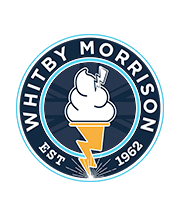Statement: Response to articles concerning Ice Cream Van Emissions
This statement is written in response to the recent press articles regarding the emissions from Ice Cream Vans.

Whitby Morrison acknowledge the articles that have recently appeared in the press and that there are areas to be addressed. Disappointingly, the facts included appear to have been selected to support the article bias rather than present a balanced argument. This is not to say that the articles are fictitious.
As the industry leader, Whitby Morrison have been contacted by just one journalist for comment. This is again disappointing when the article has appeared in numerous locations, both on and offline. It is therefore appropriate that we offer the clear facts to the general public
Facts and figures
With these articles suggesting there are between 500 and 5000 Ice Cream Vans on the road, it seems somewhat unfair to tarnish all with such a deathly brush and simultaneously turn a blind eye to other road-using vehicles. The number of HGVs and LGVs equates to around 500,000 for example; between 100 and 1000 times more numerous than Ice Cream Vans.
Furthermore, in December 2018 there were 38.2 million vehicles registered for road use. Even at their highest estimate, Ice Cream Vans represent 0.01% of all registered road-going vehicles.
Ice Cream Vans today
Ice Cream Vans are a British tradition, an institution in our way of life. Whitby Morrison are extremely proud of our heritage and are passionate to support a prosperous future for both the industry and the British public.
All new Whitby Morrison Ice Cream Vans are built using new Mercedes Sprinter chassis cabs which operate using the latest engines with Euro 6 emission levels. To clarify, this exceeds the requirements set by the Ultra Low Emission Zone (ULEZ) in London. The requirements of the ULEZ are not set for review until October 2021.
Since the inception of Euro 6 engine Mercedes Sprinter chassis cabs, Whitby Morrison have produced around 250 Ice Cream Vans. Using the figures quoted within the articles, this suggests that between 5% and 50% of Ice Cream Vans in operation are as emission-clean as possible.
Of the Ice Cream Vans produced by Whitby Morrison, at least 80% are fitted with an Electric Motor Drive System (EMD) which eliminates the need for engine power when electricity supply is available.
The way forward
Whitby Morrison are pleased to offer EMD conversions for all ice Cream Vans in operation. Due to the varying ages and build specifications, lead times and associated costs will vary. The EMD system has been fitted to Ice Cream Vans for more than 25 years, and can be fitted immediately.
A vintage Ice Cream Van currently operating in Kensington Gardens was produced by Whitby Morrison in 2016. This vehicle operates purely from a self-contained on-board battery system. It has performed admirably and opened opportunities to improve the industry further.
Further to this, Whitby Morrison have been working behind the scenes to develop a fully electric system to power the Soft Ice Cream Machine and associated equipment. The prototype has been working since October 2018 and has enabled further development and improvements.
It is the objective of Whitby Morrison to have this system available to the market for the end of 2019.
